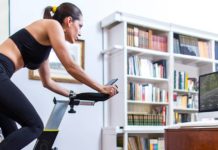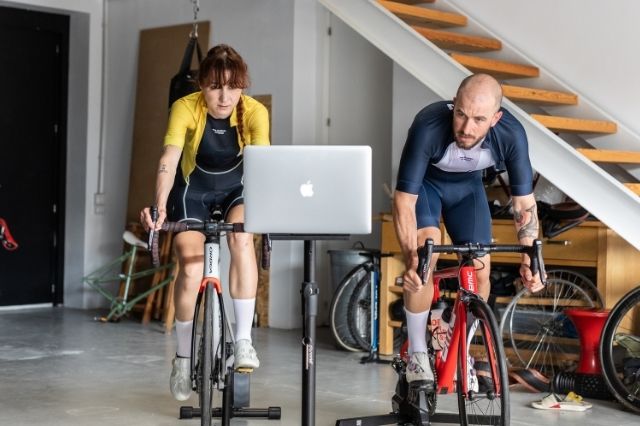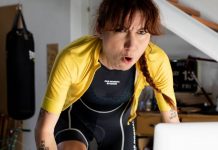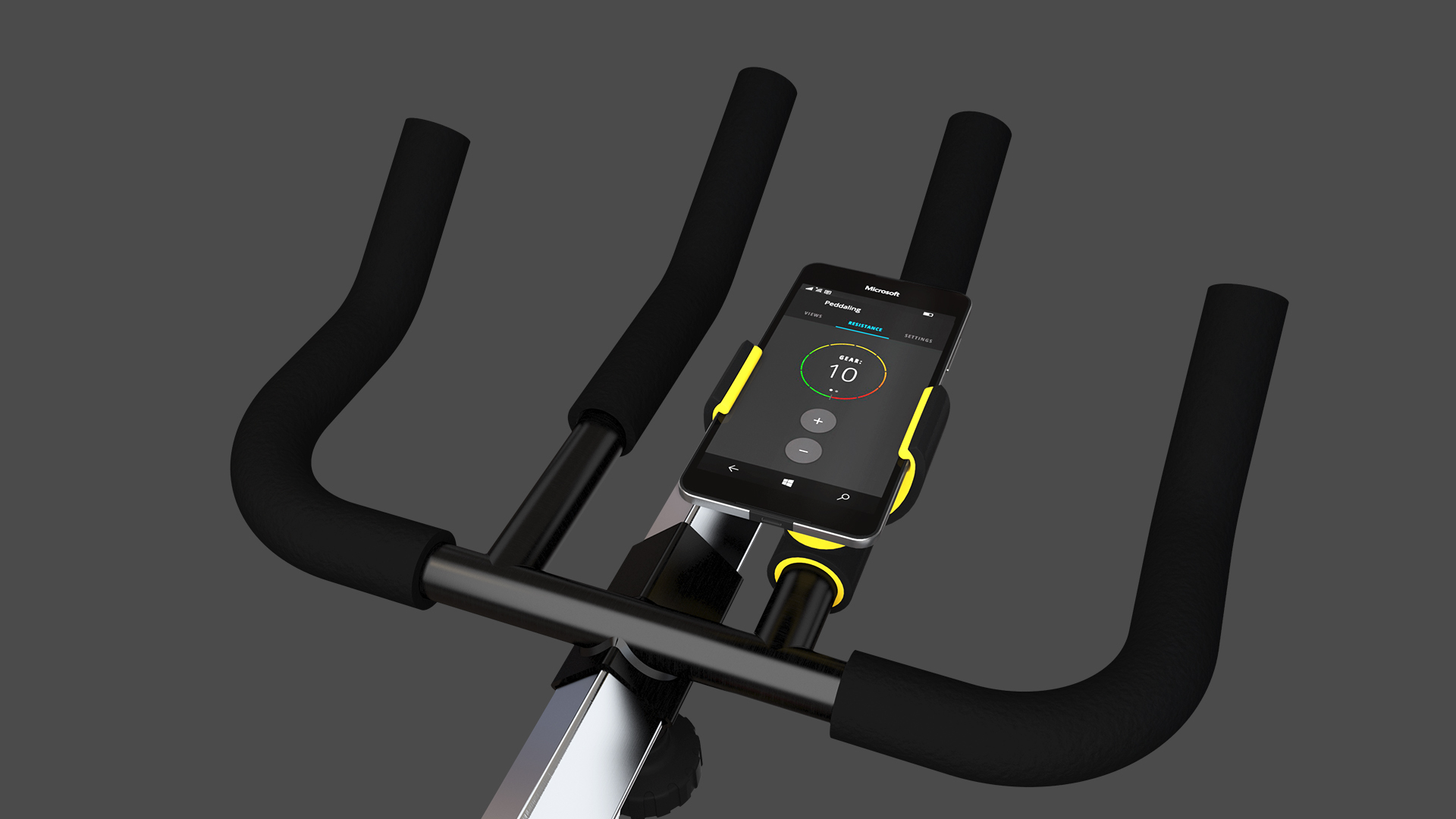In general, indoor cycling doesn’t cause many injuries, but we’re going to consider some things to watch out for to avoid any potential problems that could temporarily keep you off the bike.
- Always wear the right clothes when working out. Use technical garments that are breathable and snug so you can ride risk free. I should note that wearing cycling shorts is absolutely essential to avoid saddle sores and improve your comfort when atop the saddle.
- Be sure to have a water bottle ready. IC is an activity where you lose a lot of liquids that you have to replenish during the session.
- Try to use rigid, cleated shoes for maximum safety while pedaling and improved technique.
- Check the cleats every now and then. They can shift, which can cause your foot, ankle and knee to become misaligned, affecting your pedaling technique. This, in turn, can injure or overload the knee or the ankle.
- Make sure your position on the bike is correct. Check the adjustments, especially the seat height. A seat that’s too low can place extra pressure on the kneecap, with everything that entails, while a seat that’s too high can cause problems with the hamstrings, to say nothing of the rocking motion of the hips that usually results when the feet are not properly supported by the pedals.
- Try to get to IC classes early enough that you can warm up properly for the main part of the class and avoid injuries caused by an insufficient warm-up.
- Try to keep the most logical cadence at all times. You have to adjust the RPM properly to the intensity level required.
- Always train with resistance. Training without resistance is the worst thing for your knees. The activation level of the muscles will depend on the pedaling intensity. Muscles that are more activated means more stability for your knee and less risk of injury.
- You have to know how to ride both standing and sitting. In IC there’s probably too much pedaling while standing. Get used to riding more in a sitting position.
- Whenever you can, use workout zones. It’s the safest way to exercise using your maximum reference values.
- Try training with absolute control over the intensity, cadence and times. Monitoring every parameter is essential to practicing modern indoor cycling.
- You should change the position of your hands on the handlebar gradually. This will help you relax your arms and wrists and little.
- When placing your hands on the handlebar, make sure your arms aren’t fully extended. Remember that your elbows have to be bent a little.
- Try not to bounce or rock too much on the bike. If this happens, it might be for one of two reasons: either because the bike isn’t properly adjusted to your body, or because you need to improve your pedaling technique.
- Your knees have to be parallel at all times when pedaling. Otherwise the knees will be misaligned with the pedals or shoes, resulting in far less efficient power delivery and a greater risk of injury.
- Avoid gripping the handlebar too tightly. Your arms and shoulders should be relaxed when pedaling. Place your hands on the handlebar as if playing a piano. Easy does it.















